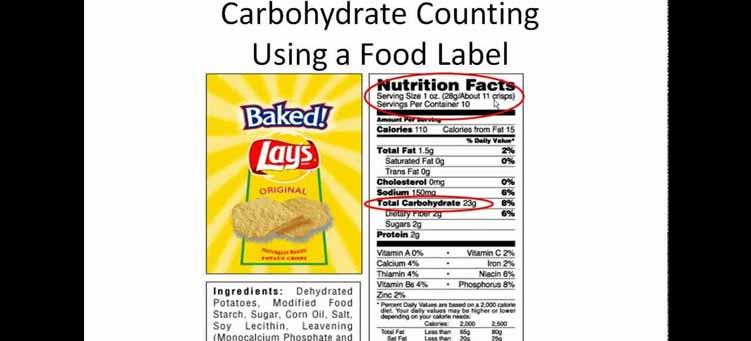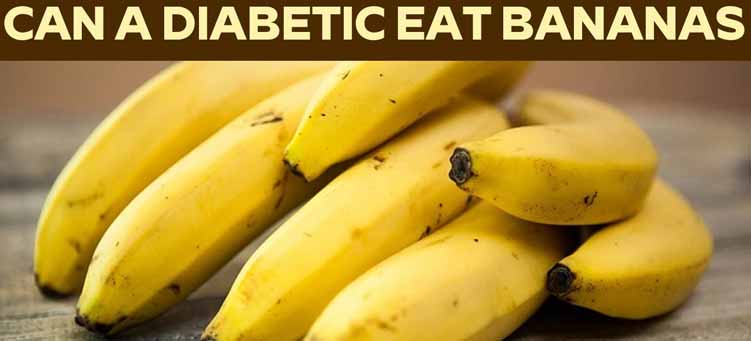Practical Tips for Accurate Counts
Let’s get this straight: There is no such thing as a “pro” when it comes to carbohydrate counting. There is no master’s degree or PhD in Carbohydrate Science at any major university, nor is there a course focusing on counting carbohydrates in any dietetics or nutrition science program. And I’ve yet to meet anyone at a circus or carnival who, for a mere dollar, will “guess the carbohydrates” in your favorite food item, lest you win a valuable prize. So why would anyone with diabetes want to count carbohydrates “like a pro”?
Simple. When it comes to keeping blood glucose levels in control, carbohydrate counting works better than any other system. Better than counting calories. Better than avoiding sugar. And certainly better (and simpler) than the exchange system.
Carbohydrate is what raises blood glucose level abruptly after meals. Not fat or protein or vitamins or minerals. Just carbohydrate. Counting and managing the amount of carbohydrate in your diet has important benefits. If you take multiple daily injections of insulin or use an insulin pump, carbohydrate counting allows you to match doses of mealtime rapid-acting insulin to the foods you eat. This allows for almost unlimited dietary flexibility and helps to prevent post-meal highs and lows.
If you control your diabetes with diet and exercise, pills, or just one or two insulin injections a day, you can also use carbohydrate counting to improve your control. Researchers at the University of Texas School of Allied Health Sciences in Galveston found that consistent carbohydrate intake (eating the same amount of carbohydrate at the same meals every day) in people with Type 2 diabetes leads to improvements in blood glucose control, whether or not a person also loses weight. In their study, people who ate consistent amounts of carbohydrate at regular intervals lowered their average blood glucose by 55 mg/dl, and lowered their average HbA1c (glycosylated hemoglobin, or A1C) from 8.8% to 6.9%. (The American Diabetes Association recommends shooting for an HbA1c level below 7% to prevent long-term diabetes complications.)
Counting Carbohydrates Using a Food Label – Diabetes Center for Children at CHOP
A few definitions for counting carbohydrates
Carbohydrate counting simply means adding up the total amount of carbohydrate (in grams) in meals and snacks. Carbohydrates include sugars, including sucrose (table sugar), fructose (fruit sugar), and lactose (milk sugar), as well as starches, which include much of the carbohydrate found in bread, rice, cereal, and potatoes. When you eat something that contains starch, the starch is broken down into simple sugars before entering your bloodstream.
Now here’s the kicker: From the standpoint of blood glucose control, it doesn’t matter if the carbohydrates you eat are in the form of sugars or starches. OK, now relax. Take a few deep breaths, then call your mom to say “I told you so.” Both sugars and starches will raise blood glucose by the same amount and at about the same rate. A cup of rice containing 45 grams of starch will raise blood glucose level just as much as a can of regular, sugar-sweetened soda containing 45 grams of sugar. In other words, don’t be overly concerned about the sugar content of a food. Be concerned about the “total carbohydrate” content of a food.
So that’s it? Just count the carbohydrates, and life will be wonderful? Not so fast. Accurate carbohydrate counting is what we’re after: That’s because being off by just 5 grams of carbohydrate can affect blood glucose by 30–40 mg/dl in someone who weighs 50–100 pounds and by 20 mg/dl in someone who weighs 150–200 pounds. But accurate carbohydrate counting had better not require too much work, or nobody’s going to do it.
Research presented at the American Diabetes Association annual Scientific Sessions in 2004 showed that even educated people with Type 1 diabetes who manage their diabetes well have difficulty counting carbohydrates accurately, with a tendency to underestimate the carbohydrates consumed at breakfast, dinner, and snacks and to overestimate the carbohydrates consumed at lunch. The estimation of complex meals, including restaurant food, is least precise.
At my own practice, many clients who professed to being expert carbohydrate counters struggled to score 50% on “The Ultimate Carbohydrate Counting Test” located at my website, http://integrateddiabetes.com/carb-quiz/. But by using some of the techniques described here, those same people have become highly proficient at counting carbohydrates accurately — and they don’t spend half their day obsessing over food.
Here are three simple recommendations for counting carbohydrates accurately and easily: Read labels, use resources listings, and learn to estimate portion sizes.
Read food labels
When it comes to carbohydrate counting, labels rule. The U.S. Food and Drug Administration (FDA) requires the manufacturers of all packaged and processed foods to list key nutrient information and ingredients on food labels. Most industrialized nations worldwide have similar requirements. In the United States, the label must list (among other things) the grams of total carbohydrate as well as grams of sugar and dietary fiber in a single serving of the food item. Although not required, some food manufacturers also list the amount of soluble fiber, along with sugar alcohols and “other” carbohydrates (typically starches) below total carbohydrate.
Of all these items, total carbohydrate is by far the most important. The total carbohydrate includes everything in the food that is carbohydrate: starch, fiber, sugars, and sugar alcohols. Remember to look for the number next to the little “g” (which stands for grams). The percentage (%) that follows it is the government’s estimate of how much of your daily recommended food intake is included in a serving of this food item. The percentage of daily requirements is irrelevant to carbohydrate counting.
Here’s another fun fact: When counting carbohydrates, it is not necessary to know how much sugar a food item contains. Remember, sugars are just a type of carbohydrate and are included in the total carbohydrate listings on the label.
So that’s it, right? Almost. You may have to make a slight adjustment if the food contains fiber or sugar alcohol. For food items that contain either of these, you should do the following:
- Subtract all the fiber grams from the total carbohydrate count since fiber does not raise blood glucose. For example, a food item containing 24 g of total carbohydrate and 6 g of fiber should be counted as 18 g carbohydrate (24 – 6 = 18). Fiber-rich foods include beans, whole-grain breads, certain cereals, and some fruits and vegetables.
- Subtract half the grams of sugar alcohols from the total carbohydrate count, since sugar alcohols affect blood glucose half as much as ordinary carbohydrates. For example, a food item containing 17 g total carbohydrate and 8 g of sugar alcohols should be counted as 13 g carbohydrate (17 – 4 = 13). Sugar alcohols are sweeteners found in many reduced-calorie foods such as gum, mints, yogurt, ice cream, cookies, and candy. They typically go by names ending in “ol,” such as sorbitol, maltitol, lactitol, mannitol, and xylitol. Two sugar alcohols that do not have the –ol suffix are hydrogenated starch hydrolysates (HSH) and isomalt.
One other note regarding label reading: Be careful about serving sizes. The serving size listed on the label may not be what you normally consume. If the portion you eat is smaller or larger than the stated serving size, you will need to adjust the carbohydrate total accordingly. If a serving size is 1/2 cup and you have 1 cup, you will need to double the carbohydrate amount.
Check nutrition listings
As useful as food labels are, they can only help when they are available. Unpackaged foods such as fresh fruits and vegetables, many baked goods, restaurant foods, and prepared foods such as those sold at a deli or salad bar typically do not carry a label. For these types of foods, a printed or electronic nutrient listing can really help, and several are readily available in book or booklet form, on the Internet, or as downloads to a personal computer or smartphone. Some include comprehensive nutrient information for the foods listed, while others list only certain nutrients, such as carbohydrate and fiber.
Many of these listings are based on the USDA’s National Nutrient Database for Standard Reference, which is itself searchable online. Some books and brochures are small and light enough to carry with you for help with food decisions when grocery shopping or dining out. Similarly, some electronic listings can be downloaded to a smartphone, so you never have to be without needed nutrient information. Information on fast-food items is included in most lists, but you can also check the websites of individual restaurants, most of which post nutrient information for their menu items.
For a list of some useful resources, see page “Resources.”
Learn to estimate food portions
A very practical technique for counting carbohydrates is the portion conversion method. Portion conversion involves estimating the volume of a serving of food by comparing it to a common object such as your fist, a soft drink can, or a milk carton, and then converting the volume into a carbohydrate count based on the typical carbohydrate content for a known amount of that type of food. This approach is particularly useful when having a complex meal (such as spaghetti and meatballs), dining out, or eating foods that vary in size (such as fruits and potatoes).
Here’s an example of how it works: You know (because you checked in a reliable resource) that one cup of cooked pasta contains about 40 grams of carbohydrate. You estimate that the portion of pasta you’re about to eat is 1 1/2 cups by visually comparing the amount of pasta on your plate to a 12-ounce soft drink can. You then do the math (40 grams x 1 1/2 cups) to determine that you’re about to eat 60 grams of carbohydrate.
Here are some common “measuring devices” that can be used to mentally calculate portions:
Average adult’s fist = 1 cup
Baseball = 1 cup
Child’s fist = 1/2 cup
Cupped hand = 1/2 cup
Deck of cards = 1/3 cup
Half-pint of milk = 1 cup
12-ounce soft drink can = 1 1/2 cups
When estimating portions, it is helpful to have the measuring device right next to the food item. For instance, placing your fist next to a salad will allow you to estimate the number of cups of salad. Having a half-pint of milk or a 12-ounce can of soda next to a piece of fruit will allow you to do the same. Be sure to count only the portion that you are actually going to eat. The rind or inedible peel on fruit, for example, should not be counted.
The best way to fine-tune your portion size estimation skills is through practice. Estimate the volume of a food item using your fist or another item of known volume for comparison, then either look up the exact volume on the food’s label or place it in a measuring cup. Doing this repeatedly will train your eye to estimate portions more accurately.
You will also need a reliable source of nutrient information, such as one of the printed or electronic listings mentioned earlier, to know how much carbohydrate is in a standard portion. The list in “Carbohydrate Per Cup” gives approximate carbohydrate counts for one cup of some common foods. Using this information, you can calculate that the 1 1/4-cup portion of cantaloupe pictured in “Estimating Portion Sizes,” at 20 g per cup, has about 25 grams of carbohydrate (20 x 1 1/4). Three large handfuls of popcorn would have 5 g/cup x 3 cups, or 15 g carbohydrate. Half a “baseball” of peas has 30 g/cup x 1/2 cup, or 15 g carbohydrate.
This approach allows you to closely estimate the carbohydrate count of a food item if no other means are available. Again, it is best to practice this method with some packaged food items (where a label is available) to hone your skills.
The “type A” way of counting carbohydrates
If you’re looking for a more scientific, precise (albeit somewhat less practical) method of carbohydrate counting, carbohydrate factors are for you. This technique involves weighing a portion of food on a scale and then multiplying the weight of the food (in grams) by its carbohydrate factor (which represents the percentage of the food’s weight that is carbohydrate). Doing so will produce a fairly precise carbohydrate count for that portion of food.
For example, apples have a carbohydrate factor of 0.13, which means that 13% of an average apple’s weight is carbohydrate. If an apple weighs 120 grams, the carbohydrate count is 120 x 0.13, or 15.6 grams.
As is the case with portion size estimation, carbohydrate factors should only take into account the food portion that will actually be consumed. Peels, rind, skin, seeds, or packaging should be removed before weighing. The apple measurement, for instance, may slightly overestimate the carbohydrate count since the apple core is not usually eaten.
Here are carbohydrate factors for some common foods:
- Apple: 0.13
- Apple pie: 0.32
- Bagel: 0.51
- Baked potato: 0.22
- Carrot (raw): 0.06
- Cheese pizza: 0.32
- Ice cream (chocolate): 0.27
- Spaghetti (cooked): 0.26
Condensed lists of carbohydrate factors can be found in my book (The Ultimate Guide to Accurate Carbohydrate Counting) and in the book Pumping Insulin, by John Walsh and Ruth Roberts.
You can also find the carbohydrate factor of any food listed in the USDA’s National Nutrient Database for Standard Reference by looking up the carbohydrate content in 100 grams of the food item, then using that number as the percentage of carbohydrate by weight. For example, 100 grams of Cheerios contains 74.68 grams of carbohydrate. That means that Cheerios are about 75% carbohydrate. If your portion weighs 30 grams, you would multiply 30 x 0.75 to get 22.5 grams of carbohydrate.
Personalized help for counting carbohydrates
Registered Dietitians (RDs) who are also Certified Diabetes Educators (CDEs) take great pride in helping people with diabetes learn to count carbohydrates. To find a diabetes and nutrition expert near you, call the Academy of Nutrition and Dietetics Nutrition Hotline at (800) 366-1655, or the American Association of Diabetes Educators referral service, 800-TEAM-UP-4 (832-6874).
Now, if your current career doesn’t work out, you can always take that job as “carbohydrate guesser” at the circus!
Source: diabetesselfmanagement.com




[…] Carbohydrate counting involves keeping track of the amount of carbohydrates you eat and drink each day. Because carbohydrates turn into glucose in your body, they affect your blood glucose level more than other foods do. Carb counting can help you manage your blood glucose level. If you take insulin, counting carbohydrates can help you know how much insulin to take. […]